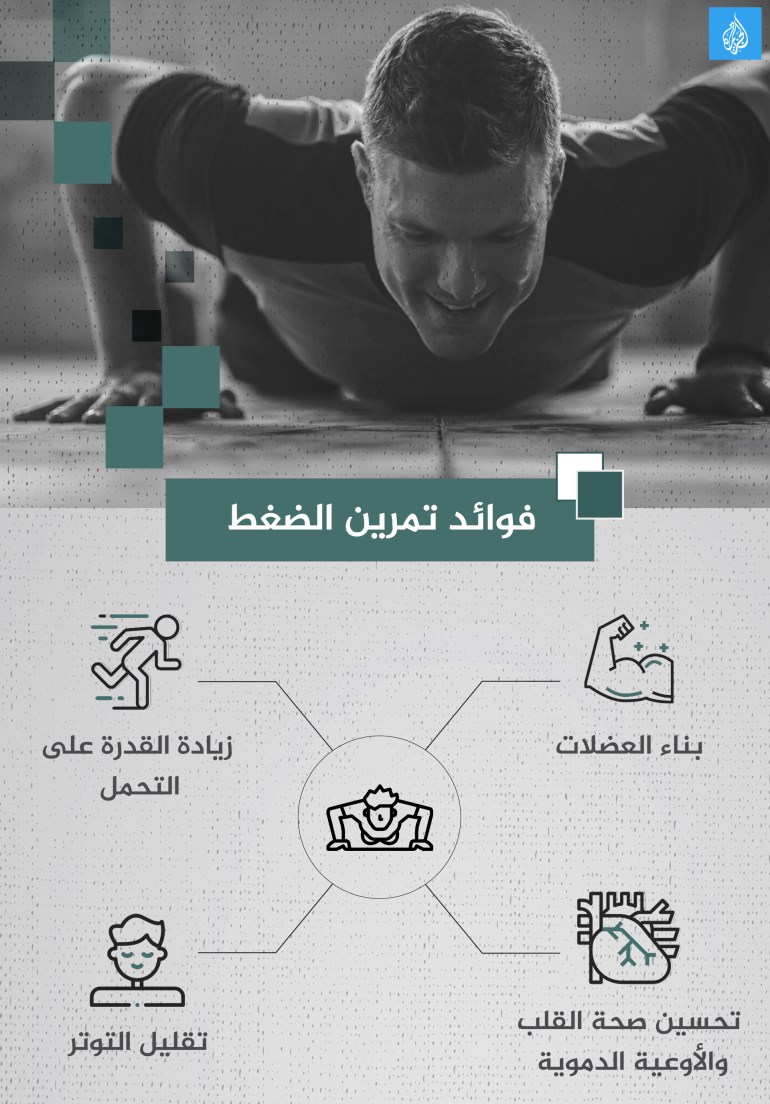What happens to your body when you repeat push-ups 50 times a day? | Health

Push-ups are one of the best fitness exercises with many physical and mental health benefits, including increased strength, muscle mass, and cardiovascular fitness.
Doing 50 push-ups every day for a month can increase strength and muscle mass, making your body better.
Push-ups are a simple but effective exercise that can help you achieve your fitness goals, including increasing strength and muscle mass.

Here's what happens to your body when you repeat 50 push-ups every day for 30 days:
Build new muscle tissue
The pressure placed on the muscles during push-ups causes micro-tears in the muscle fibers, creating new muscle tissue and increasing strength and fitness.
Increase endurance
Doing push-ups regularly can increase your endurance, allowing you to perform more push-ups in a row, improving your overall endurance in all areas of life.
relieve pressure
Like all exercise, push-ups lead to the secretion of higher levels of endorphins, substances that can give people a feeling of comfort and improvement, improve mood and reduce stress.
Endorphins are chemicals (hormones) released by your body during pleasurable activities such as exercise, massage, and eating. Endorphins help relieve pain, reduce stress, and increase feelings of well-being.
Improve cardiovascular health
Doing 50 push-ups a day can improve cardiovascular health and reduce the risk of arterial disease.
A 2019 study also found that people who could do 40 push-ups had lower rates of cardiovascular disease than those who couldn't complete 10 push-ups.
Push-ups can serve as a gauge of upper body fitness, allowing you to evaluate whether you need to put in more effort to keep your upper body in good working order.
Improve your daily tasks
The abdominal muscles used to stabilize the body during push-ups are the rectus abdominis and the internal and external obliques. Because push-ups involve multiple joints, they are a compound exercise.
The upper body muscles that play a role in push-ups are the deltoid muscles of the shoulders, the pectoralis muscles of the chest, the triceps and biceps of the upper arms, the gluteal or gluteal muscles, and the erector spinae muscles of the back.
In daily life, you often need to push objects, from doors to shopping carts. Functional fitness developed through push-ups can provide the strength needed to perform these movements. Strengthening the stabilizing muscles around your shoulder can help protect you from rotator cuff injuries.
Is it necessary to do 50 push-ups every day?
While doing 50 push-ups a day can provide significant benefits, doing fewer push-ups on a regular basis can improve your physical and mental health.
Are there any risks or caveats to doing 50 push-ups a day?
It's important to listen to your body and gradually increase the number of push-ups to avoid injury. If you have any medical conditions, such as diabetes or high blood pressure, it is recommended to consult a healthcare professional before starting a daily stress routine.
How to do 50 push-ups every day?
Doing 50 push-ups may seem like a lot, but it's actually not that difficult if you break them into sets every day.
For example, you could do 10 push-ups every hour, or 20 push-ups every two hours.
Instructions for performing push-ups
- Push-ups build upper body strength and core strength. It has many benefits. Beginners can start with lower reps, while more advanced exercisers can use higher reps.
- To do push-ups, you'll lie on all fours on the floor with your hands slightly wider than your shoulders. Don't lock your elbows. Extend your legs back, balancing on your hands and toes, with your feet hip-width apart.
- Once you're in this position, contract your abdominal muscles and tighten your torso by pulling your belly button toward your spine.
- Inhaling, slowly bend your elbows and lower yourself to the floor until your elbows are at a 90-degree angle.
- Exhale while contracting your chest muscles and pushing up through your hands to return to the starting position.
- Maintain body tension throughout the compressions. Also, keep your body in a straight line from head to toe and don't hunch or arch your back.
Can push-ups burn fat?
Push-ups don't burn fat directly, but resistance training does burn calories, which may help make up for the caloric deficit needed to lose weight. Additionally, building muscle can increase your metabolism.
Source link





